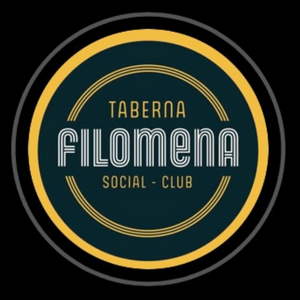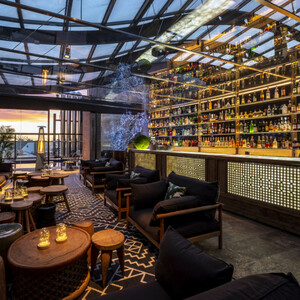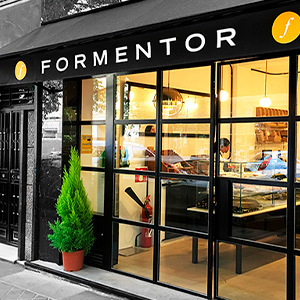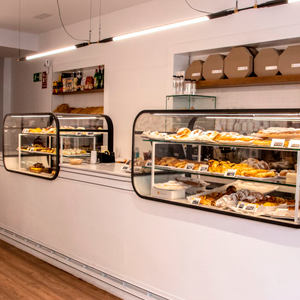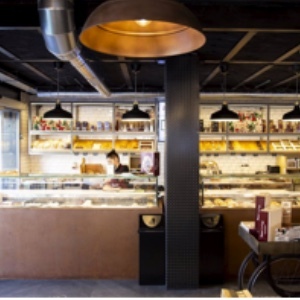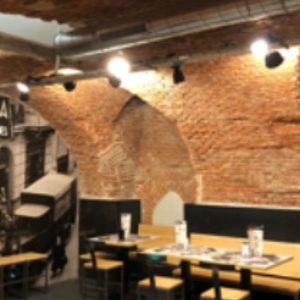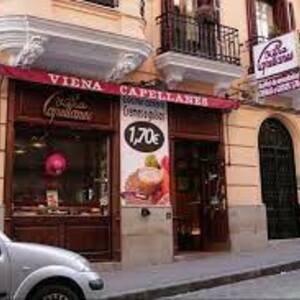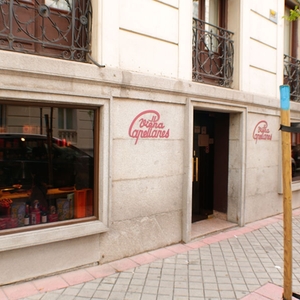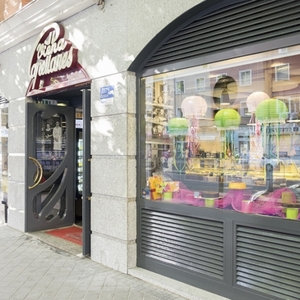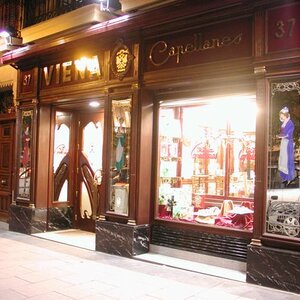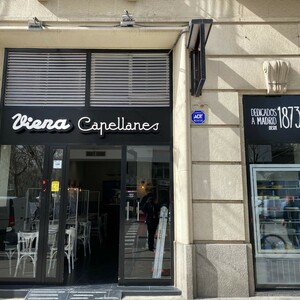Antonio Sanchez Tavern
Antonio Sanchez Tavern
The cadastral planimetry, carried out in 1749 under the reign of Felipe VI, shows that the current building remains the same and that the space occupied by the tavern in it has not changed. The writer and journalist A
...LA TABERNA ANTONIO SÁNCHEZ is the oldest tavern in Madrid since it occupies the same premises since the exact date of its foundation is unknown, but it is known that it is prior to February 1787 when it is published in the "Curioso, Erudito, Económico Diario y Comercial" its transfer as a business dedicated to the dispatch of wines. Little is known about the dawn of its existence, only some information that confirms that its activity as a tavern and wine office has not ceased since its inception.In the 19th century, the Tavern began to gain fame and prominence, becoming a meeting place for commentators and intellectuals from the world of bullfighting, letters and art.In 1884 it was bought by Antonio Sánchez Ruiz, son of well-known innkeepers and from whom it receives its current name.His son, the bullfighter Antonio Sánchez Ugarte, inherited the Tavern turning it into a A landmark in Madrid and a regular meeting point for personalities such as PIO BAROJA, SOROLLA, MARAÑÓN CAMBA, COSSÍO, JUAN CRISTÓBAL VÁZQUEZ DÍAZ and ANTONIO DÍAZ CAÑABATE, hosting the latest exhibition of the famous painter IGNACIO ZULOAGA, of whom Antonio Sánchez was a great friend and student. The decoration of the Tavern stands out for its antiquity, making it a true museum. It has never been renovated, so it keeps intact like no other friezes and carved wooden decorations, gas lamps with which the place was illuminated, the manual elevator for jars and frescoes with the faces of the bullfighters, FRASCUELO, LAGARTIJO and CARA ANCHA , who in the 19th century frequently went to have more than one glass of wine with their French toast. The heads of the bulls in the alternatives by VICENTE PASTOR from 1902 and that by ANTONIO SÁNCHEZ from 1922 are also original. DIAZ CAÑABATE dedicated his book “Historia de una Taberna” to describing the history of this place, our Nobel Prize CAMILO JOSÉ CELA includes us in his book “Torerías” and GLORIA FUERTES liked to come here to write her stories and poetry.
This establishment has sustainability policies Validated by Hosteleria Madrid
Hours: Tuesday to Saturday from 1:00 p.m. to 5:00 p.m. and from 8:00 p.m. to 12:00 a.m.
Read lessCalle del Mesón de Paredes, 13, La taberna Antonio Sánchez es la taberna más antigua de Madrid ya que ocupa el mismo local desde en el mismo desconoce la fecha exacta de su fundación pero se sabe que es anterior a febrero de 1787 cuando se publica en el "Diario Curioso, Erudito, Económico y Comercial” su traspaso como negocio dedicado al despacho de vinos. La planimetría catastral, realizada en 1749 bajo el reinado de Felipe VI, demuestra que el edificio actual sigue siendo el mismo y que el espacio que ocupa la taberna en él no ha cambiado. Se sabe poco sobre los albores de su existencia, solo algunos datos que confirman que su actividad como taberna y despacho de vinos no ha cesado desde su inicio. En el siglo XIX la Taberna comienza a adquirir fama y protagonismo convirtiéndose en un lugar de encuentro de tertulianos e intelectuales del mundo taurino, de las letras y del arte. En 1884 es comprada por Antonio Sánchez Ruiz, hijo de conocidos taberneros y de quien recibe su nombre actual. Su hijo, el torero Antonio Sánchez Ugarte, hereda la Taberna convirtiendola en un lugar de referencia en Madrid y punto habitual de encuentro de personalidades como PIO BAROJA, SOROLLA, MARAÑÓN CAMBA, COSSÍO, JUAN CRISTÓBAL VÁZQUEZ DÍAZ y ANTONIO DÍAZ CAÑABATE acogiendo la última exposición del afamado pintor IGNACIO ZULOAGA del cual fue gran amigo y alumno Antonio Sánchez. La decoración de la Taberna destaca por su antigüedad convirtiendola en un verdadero museo. Nunca ha sido renovada por lo que mantiene intactos como ninguna otra frisos y decoraciones de madera tallada, lámparas de gas con las que se iluminaba el local, el elevador manual de frascas y frescos con los rostros de los toreros, FRASCUELO, LAGARTIJO y CARA ANCHA, que en siglo XIX acudían con frecuencia a tomarse más de un vaso de vino con su torrija. También son originales las cabezas de los toros de las alternativas de VICENTE PASTOR de 1902 y la de ANTONIO SÁNCHEZ de 1922. El escritor y periodista A. DIAZ CAÑABATE dedicó su libro “Historia de una Taberna” a describir la historia de este lugar, nuestro Nobel CAMILO JOSÉ CELA nos incluye en su libro “Torerías” y a GLORIA FUERTES le gustaba venir a escribir aquí sus relatos y sus poesías.


